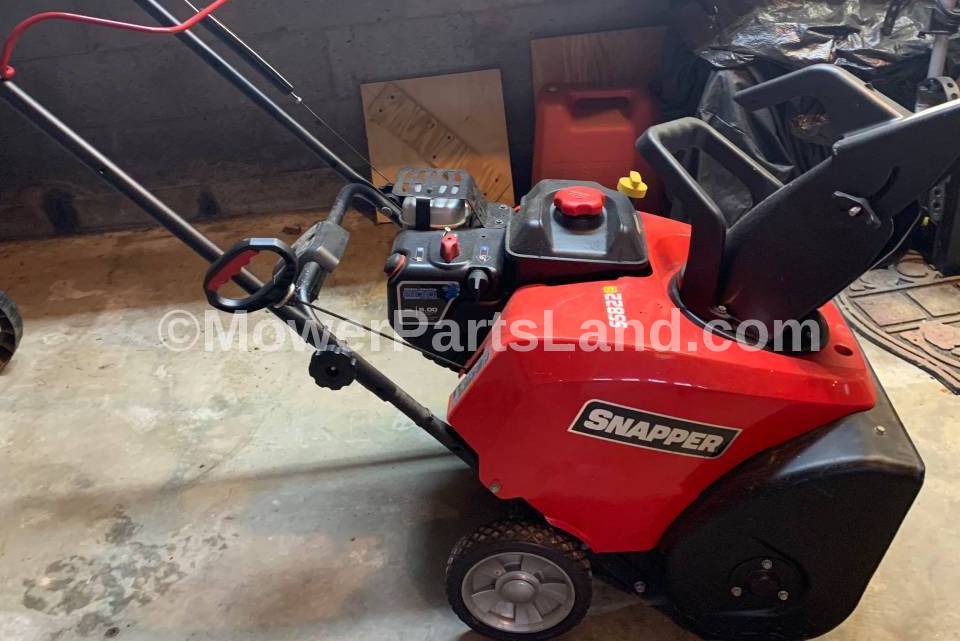


When these are applied to a dry discharge chute or impeller they will prevent snow from sticking to them. Many people recommend pre-treating your discharge chute with a variety of non-stick sprays, spray lubes or automotive and ski waxes. The earlier in the day you can get out to clear snow, the lower the temperature will be, and the sun will have melted less snow. When temperatures are lower, snow is lighter and drier. One way to reduce the effects of wet, heavy snow is to clear the snow early. When this starts to happen in your discharge chute it gets clogged up. When snow is partially melted, or “wet,” it packs together more readily and is likely to stick and freeze to other surfaces. This is because wet, heavy snow, especially snow that’s been treated with de-icing material, is particularly sticky. It doesn’t matter if you’re using a single or two stage snowblower when you’re fighting wet and heavy snow-clogs are likely. Marking any walkways, driveways or planters with driveway markers will help you clearly see your boarders no matter how deep the snow is and will help you avoid accidentally hitting any landscaping materials used to edge your walkways and planters. We recommend making sure any areas you plan on clearing snow from are clear of all objects that can easily be hidden by snowfall and become lodged in your snowblower. A frozen newspaper or dog toy can end up costing you a few hours of frustration and, depending on the damage caused, can cost you a bit in repairs as well. When a hidden object gets picked up and lodged into a snowblowers paddles or auger, it’s a guaranteed clog. It’s easy for some objects to become covered in a light layer of snow and become hidden in your drive or walk way… just waiting to ruin your day and leave you with a half-cleared driveway. The most common cause of chute clogging is running over a newspaper or other hidden object. If you notice you need to run your snowblower with the choke constantly engaged, this is a sign that you have a fuel issue and need to have it serviced. Tips from the mechanics:The most common causes of snowblower failure/clogging are related to fuel problems or hidden objects. Whether it’s a hidden object, the type of snow being cleared or a mechanical problem, being aware of common issues can help you preventatively avoid clogging and differentiate a clog from a more serious mechanical problem. Whether you’re using a single stage or two stage snowblower, there are some common causes of clogs that will stop up either type of machine. Never use your hands to clear a clogged snowblower and make sure you’re following our snow removal and winter safety tips to help keep you safe while you combat winter’s icy wrath. When the blockage is cleared this tension is released, causing the moving parts to continue moving again until the tension is fully released.

They are designed to do this to prevent damaging the auger or engine when the auger or paddles are abruptly stopped. This builds up and stores tension like a spring. When a snowblower gets clogged, the moving parts abruptly stop. Consumer Product Safety Commission (CPSC), in a recent year there were 590 finger amputations involving snowblowers and, on average, there are an estimated 5,740 hospital emergency room-related injuries associated with snowblowers. An operator clearing a clogged snowblower or snowblower chute with their hands is the leading cause of snowblower injuries. It’s very important to never clear a clogged snowblower with your hands. NEVER Clear Snowblower Clogs with Your Hands!


 0 kommentar(er)
0 kommentar(er)
